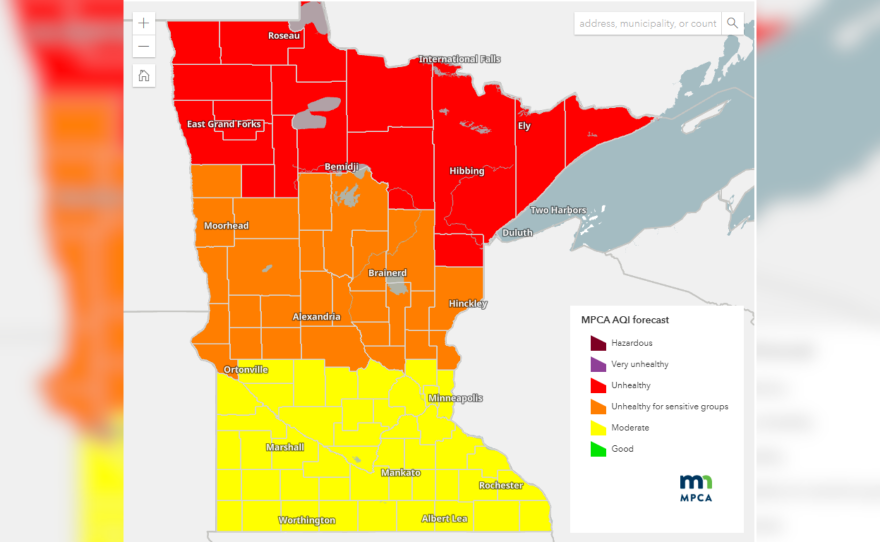Smoke is expected to return to Northern Minnesota on Monday evening, July 28, impacting air quality the rest of the week.
The Minnesota Pollution Control Agency issued an air quality alert for all of Northern Minnesota on Monday that begins at 6 a.m. Tuesday.
On Tuesday, the MPCA updated its alert, extending the alert to Saturday. With the upgrade, the MPCA says it ties the longest air quality alert in the state with the St. Louis County Greenwood fire in 2021.
Northerly winds will continue transporting waves of heavy surface smoke from wildfires across Manitoba and Saskatchewan into Minnesota. The agency says smoke will move south across all of Minnesota and linger through Saturday afternoon. The smoke will be reinforced by an area of high pressure that will create light winds and limit the dispersion of smoke.
"The air quality alert has been expanded to include all of Minnesota and extended until Saturday afternoon when the air quality is forecasted to improve," stated the release.
Air quality is expected to reach the Red, or Unhealthy, category for the northern third of the state and Orange, or Unhealthy for Sensitive Groups, category for the central third of the state.
Populations most at risk of health problems related to air pollution:
- people with lung diseases, such as asthma, chronic bronchitis, emphysema, and chronic obstructive pulmonary disease
- infants and young children
- people who work or exercise outdoors
- adults over 65
- people with a cardiovascular disease
- people in poverty; people who lack access to health care
- people who smoke or are exposed to second-hand smoke
- people working in occupations where there is high exposure to contaminated air
- people who spend a lot of time near busy roadways
This story was updated on July 29, 2025, to reflect an updated air quality alert from the Minnesota Pollution Control Agency.
-
Plus: Petition aims to force public vote on Carlton-Wrenshall consolidation; alumni take one last trip through Nashwauk High School before demolition.
-
Secretary of State Steve Simon presented five St. Louis County election workers with Excellence in Election Awards on Nov. 20, 2025.
-
After receiving private grant funding for a new permanent exhibit, the Beltrami County Historical Society is seeking a diverse group of people to serve on an Exhibit Advisory Committee.
-
The Minnesota Bureau of Criminal Apprehension identified the man and deputies involved in a deadly exchange of gunfire in Onigum on Nov. 16, 2025.
-
North Star Manganese CEO Rick Sandri presented the findings Nov. 12, 2025, to the Emily City Council and an overflow crowd of people at Emily City Hall.
-
Plus: Secretary of State Steve Simon presented St. Louis County election workers with awards; and the Minnesota Department of Health presented two Northwest Minnesota practitioners with rural health awards.
-
Planning for natural disasters minimizes the impact of events that can cause vast economic loss and personal hardship, and plan updates make the county eligible for FEMA funding.
-
As a board member, Audrey Thayer will help guide efforts to inform state legislators on issues such as local government aid, economic development, transportation and environmental policy.
-
Dr. Joseph Corser, a medical director at Sanford Bemidji, and Nicole Kiesow, physician assistant from the Headwaters Health Clinic in Fosston, were recognized for their contributions to rural health.
-
The two teen boys, ages 13 and 14, were reportedly trying to ice fish Nov. 18, 2025, when their sled fell into the water on Straight Lake near Osage.












